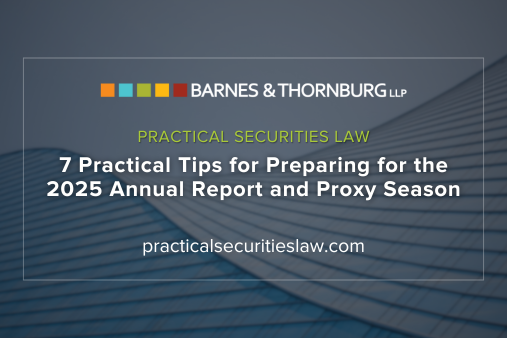The Food and Drug Administration (FDA) recently issued a brief draft guidance titled “Factors to Consider Regarding Benefit-Risk in Medical Device Availability, Compliance, and Enforcement.” The draft guidance is similar in its analysis to draft guidance documents issued (1) in April 2012 for premarket approval (PMA) and de novo applications (2) in July 2014 for 510(k) applications, and (3) in June 2015 for IDE applications, and extends that analysis to the postmarket context.
More specifically, the draft guidance notes that the FDA has the authority to limit the availability of violative medical devices and to pursue other compliance and enforcement actions related to violative medical devices. The agency recognizes, however, that to protect and promote public health, decisions regarding these actions should be made while focusing on the impact on patients.
The guidance notes that failure to consider the short-term and long-term impact of non-compliance could result in regulatory actions with unintended adverse effects (e.g., shortage of medically necessary devices like the seemingly frequent drug shortages).
The FDA states that in assessing benefit-risk factors for purposes of medical device product availability, compliance, and enforcement decisions, it will consider “relevant and reliable evidence and data available to the Agency at the time of a decision – including reliable patient preference information from a representative sample – on a case-by-case basis, to help ensure that informed and science-based decisions are made to the greatest extent practicable.”
This draft guidance then identifies and seeks to clarify the benefit and risk factors the FDA will consider when faced with decisions relating to the device availability, compliance, and enforcement. The benefit factors include:
- Type of benefit(s) – examples include the effect of the device on patient treatment plans and quality of life; impact on survival; and how much the medical device can aid in improving patient function, preventing loss of function, or providing relief from the symptoms of the disease or condition that the medical device is intended to treat
- Magnitude of the benefit(s)
- Probability of the patient experiencing one or more benefit(s)
- Duration of effect(s)
- Patient preference on benefit
- Benefit factors for healthcare professionals or caregivers – whether the device improves the way HCPs or caregivers care for patients
- Medical necessity – whether there are alternative devices
The FDA also considers several risk factors individually and in the aggregate:
- Severity, types, number and rates of harmful events associated with the use of the device
- Device-related death or serious adverse events
- Device-related non-serious adverse events
- Device related events without reported harm
- Duration of harm
- Probability of a harmful event
- Probability of the patient experiencing one or more harmful event(s)
- Number of patients exposed
- Nonconforming product risks - whether nonconforming devices have been distributed and if so, how many
- Duration of exposure to population - the length of time between initial patient exposure to the device and the point at which the risk of harm is successfully addressed
- False-positive or false-negative results - important risk factors for diagnostics
- Patient tolerance of risk
- Risk factors for healthcare professionals or caregivers – whether the risk may have an adverse impact on the clinician or caregiver.
The draft guidance also identifies a number of “additional factors” that FDA considers when assessing the availability, compliance, and enforcement decisions for a violative device, including:
- Uncertainty - the degree of certainty of the benefits and risks of a device
- Mitigations - actions taken by the manufacturer, FDA, or other stakeholders to recover benefit or limit risk or harm
- Detectability - whether a nonconformity could be identified, either by the manufacturer or by the user
- Failure mode - the specific method or type of failure
- Scope of the device issue - whether the risks identified are inherent to similar devices of the same type
- Patient impact is the impact on the health and quality of life of patients if a particular compliance or enforcement action is, or is not, taken
- Preference for availability - whether patients and caregivers would prefer to have access to the device relevant to the nonconformity or regulatory non-compliance and whether patients and caregivers adequately understand related benefits and risks
- Nature of violations/Nonconforming product - whether the violation was systemic or non-systemic in nature as well as the extent of any product nonconformity
- Firm compliance history - the manufacturer’s regulatory history and initiative in identifying and correcting issues, the repetitiveness of such issues, and the manufacturer’s communication with FDA
Finally, the draft guidance discusses a number of specific examples of application of these various factors.
As always, it is important to recall that FDA guidance documents do not have the force of law, but rather represent the FDA’s current thinking on a topic.
A copy of the draft guidance can be found here.
For more information, please contact the Barnes & Thornburg LLP attorney with whom you work or one of the following attorneys in the firm’s Food, Drug & Device Group: Lynn Tyler at (317) 231-7392 or lynn.tyler@btlaw.com; or Alicia Raines Barrs at (317) 231-7398 or alicia.rainesbarrs@btlaw.com.
Visit us online at www.btlaw.com/food-drug-and-device-law-practices.
© 2016 Barnes & Thornburg LLP. All Rights Reserved. This page, and all information on it, is proprietary and the property of Barnes & Thornburg LLP. It may not be reproduced, in any form, without the express written consent of Barnes & Thornburg LLP.
This Barnes & Thornburg LLP publication should not be construed as legal advice or legal opinion on any specific facts or circumstances. The contents are intended for general informational purposes only, and you are urged to consult your own lawyer on any specific legal questions you may have concerning your situation.
Visit us online at www.btlaw.com and follow us on Twitter @BTLawNews.











/Passle/6488d4630e7e25c9ac9f834a/SearchServiceImages/2025-01-10-22-16-01-995-67819c21f01b92931abcaac4.jpg)

